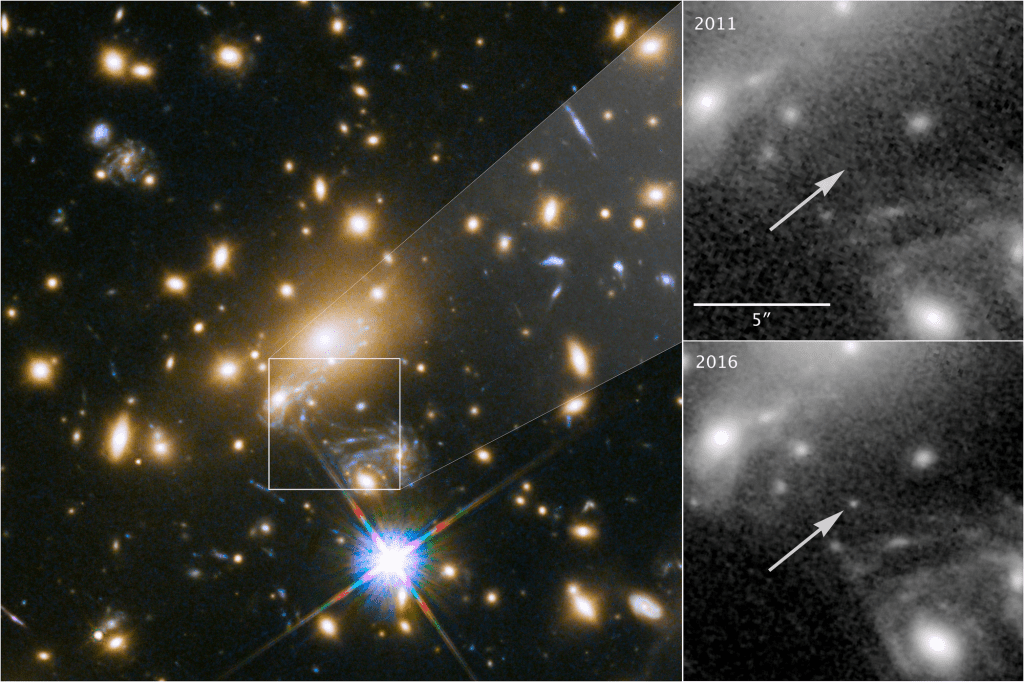Scientists have used a “cosmic magnifying glass” to image two twinkling stars, billions of light years away, magnifying them over 2,000 times, revealing a lot about the surrounding dark matter in the process.

Credit: NASA, ESA, and P. Kelly (University of Minnesota).
When you’re studying stars millions and billions of light years away, you need all the help you can get — thankfully, the universe sometimes lends an unexpected hand. This unexpected hand comes in the form of gravity.
In the simplest of terms, astronomers can use clusters of massive galaxies as a lens, to zoom in on some areas of space. According to general relativity, light follows the curvature of spacetime. Consequently, when light passes around a massive object, it bends. This means that the light from an object on the other side will bend towards an observer’s eye, just like with an ordinary lens. But unlike an optical lens, a gravitational lens has no single focal point, but a focal line.
If it all sounds complex, well, it is — but it’s already a rather common technique in astronomy.
Gravitational lensing can happen on all scales, but it’s especially effective at extremely large scales. Everything bends light (even our own bodies, by an incredibly small amount), but the gravitational field galaxies and clusters of galaxies can lens light enough by observable amounts. In two recent studies, two teams of authors repeatedly observed parts of the sky that contain massive clusters of galaxies, using the Hubble telescope.
In the two studies, researchers report ‘twinkling’ stars. There are several reasons why stars twinkle — which actually means they change brightness abruptly. For instance, they can undergo explosive events (such as a supernova eruption) — and in one case, this was actually the case. But in the other case, the twinkle wasn’t from the star itself — it was due to the relative motion between the lensed star and the lensing cluster, which made the light seem to turn brighter and then dimmer.
By studying these twinkles, researchers can not only infer the physical properties of the star themselves — but also study the distribution of dark matter around them. Dark matter is a type of matter that may constitute about 80% of the total matter in the universe, but we don’t really know that much about it because we can’t study it directly — so far, we’ve only noticed its gravitational effects.
Journal Reference:
- Extreme magnification of an individual star at redshift 1.5 by a galaxy-cluster lens. DOI: 10.1038/s41550-018-0430-3
- Two peculiar fast transients in a strongly lensed host galaxy. DOI: 10.1038_s41550-018-0405-4


